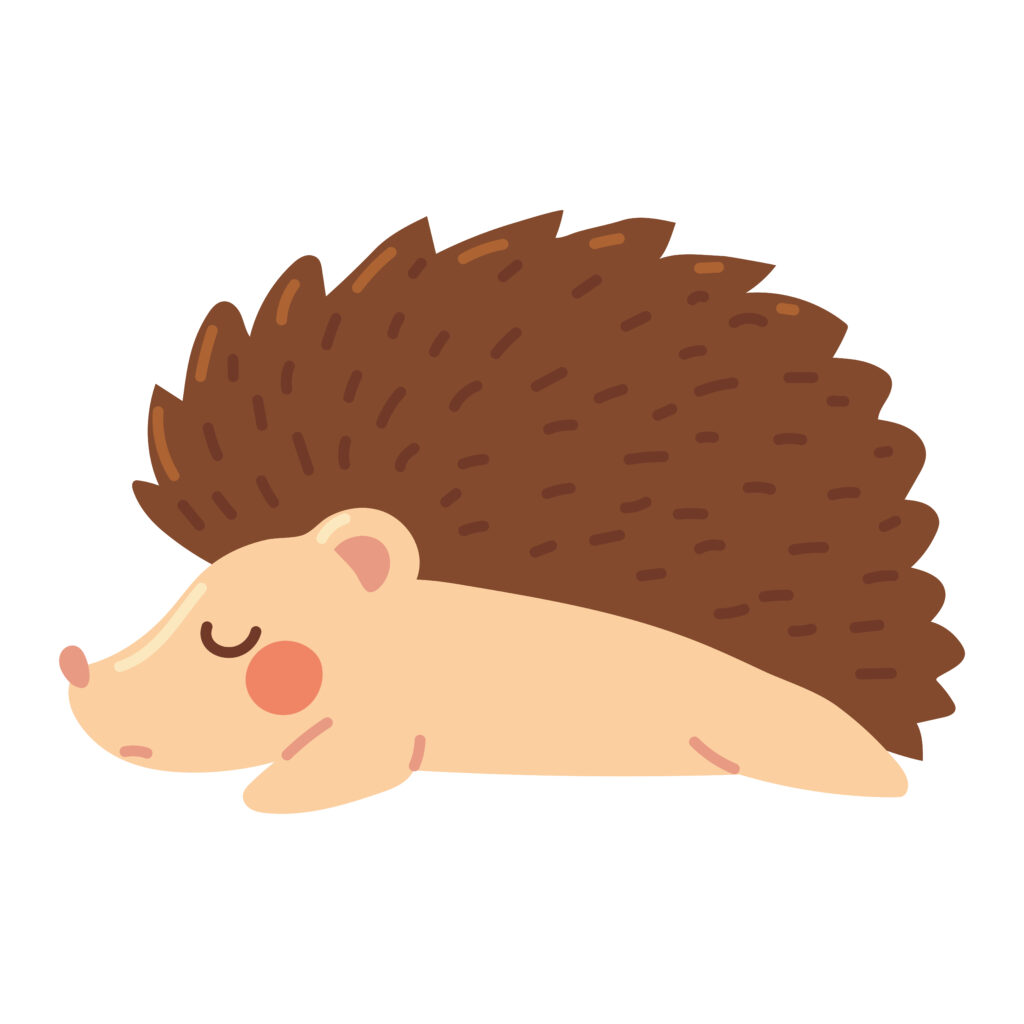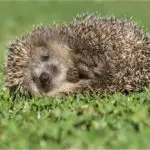
Quick Answer: Sonic, Shadow, and Amy from the Sonic series, Beatrix Potter’s Mrs. Tiggy-Winkle, and Toy Story’s Mr. Pricklepants are among the most beloved fictional famous hedgehogs.
Key Takeaways:
- Sonic the Hedgehog stands out as a cultural icon, with his video game origins in the 1990s leading to a broad media presence that includes cartoons, comics, and movies, solidifying his status as a household name and symbol of speed and coolness.
- Hedgehogs have been integral to folklore and children’s literature, with characters like Mrs. Tiggy-Winkle endearing them to generations of readers, and ancient cultures often associating hedgehogs with wisdom and mysticism, reflecting our long-standing fascination with these creatures.
- Real hedgehogs, with their diverse species and habitats, exhibit unique behaviors such as hibernation and self-anointing, and face challenges like habitat loss and climate change, highlighting the importance of conservation efforts to protect these animals in the wild.
Celebrated Hedgehogs in Media and Folklore
When we think of hedgehogs, the spiky little creatures that roam the gardens of Europe, Asia, and Africa often come to mind. But there’s another world where hedgehogs reign supreme: the realm of media and folklore. Here, these animals are not just cute critters; they are icons that have captured the hearts of millions.
Sonic the Hedgehog is perhaps the most famous of all. This blue speedster burst onto the video game scene in the early 1990s. Created by Sega to rival Nintendo’s Mario, Sonic’s lightning-fast pace and cool attitude made him an instant hit. His games were more than just entertainment; they were a cultural phenomenon. Sonic’s influence stretched far beyond the console, inspiring cartoons, comics, and a dedicated fanbase. His legacy is so enduring that he’s still a household name, with new games and a movie series keeping his spirit alive.
But Sonic isn’t the only hedgehog to have left a mark on our hearts. Mrs. Tiggy-Winkle is a delightful character from the pages of Beatrix Potter’s children’s books. Dressed in a tiny washerwoman’s outfit, she introduced the charm of hedgehogs to young readers at the turn of the 20th century. Mrs. Tiggy-Winkle’s gentle nature and homely ways made her a beloved figure, helping to cement the hedgehog’s place as a favorite animal in British culture.
The fascination with hedgehogs goes even further back in time. In ancient cultures, these creatures were often wrapped in mythology and folklore. Hedgehogs were seen as symbols of wisdom and resourcefulness in some cultures, due to their unique ability to navigate through the wild. They were also thought to have mystical powers and were sometimes associated with weather patterns and the changing of seasons.
The portrayal of hedgehogs in media and folklore reflects our admiration for these animals. They are often depicted as clever, friendly, and resilient, traits that resonate with us on a personal level. Whether it’s the thrill of following Sonic’s high-speed adventures or the cozy warmth of Mrs. Tiggy-Winkle’s home, hedgehogs have a special place in our cultural landscape.
These characters and stories have not only entertained us but have also played a role in how we view the natural world. They remind us of the wonder and diversity of wildlife, encouraging us to learn more and even protect the real hedgehogs that roam our backyards. Through their tales, we connect with these animals and appreciate their presence both in our gardens and in our stories.
As we delve into the world of hedgehogs in media and folklore, we find a rich tapestry of characters that have stood the test of time. They are more than just fictional creations; they are a testament to the enduring appeal of hedgehogs. These characters have become part of our cultural heritage, teaching us, entertaining us, and inspiring us. They show us that even the smallest creatures can have the biggest impact on our hearts and imaginations.
The Cast of Fictional Hedgehogs Beyond Sonic
While Sonic the Hedgehog may be the most famous spiny speedster, the Sonic universe is home to a host of other hedgehog characters, each with their own unique traits and stories. These characters add depth and variety to the world of Sonic, and they’ve become beloved figures in their own right.
Shadow the Hedgehog is one such character who stands out with his brooding demeanor and complex backstory. Introduced as a rival to Sonic, Shadow shares many of Sonic’s abilities but has a darker edge. His quest for identity and purpose drives many of the storylines in which he appears. Here’s what makes Shadow so intriguing:
- He possesses a mysterious past that intertwines with the larger narrative of the Sonic series.
- Shadow’s ability to use “Chaos Control” allows him to warp time and space, a power he wields with his signature Chaos Emeralds.
- His character development explores themes of memory, loss, and redemption, resonating with audiences seeking a more layered narrative.
Another prominent figure is Amy Rose, known for her persistent affection for Sonic and her upbeat personality. Amy is more than just a love interest; she’s a strong character in her own right:
- Wielding her trusty Piko Piko Hammer, Amy has formidable combat skills.
- Her optimistic outlook and caring nature often provide a moral compass for the group.
- Amy’s character has evolved from a damsel in distress to an independent and capable hero.
Silver the Hedgehog is a lesser-known but equally fascinating character. With his psychokinetic abilities and a storyline that involves time travel, Silver adds a sci-fi twist to the Sonic universe. His mission to prevent a grim future gives his character a sense of urgency and depth. Highlights of Silver’s character include:
- His telekinetic powers set him apart from other characters, allowing him to manipulate his environment in unique ways.
- Silver’s time-traveling adventures add a layer of complexity to the Sonic storylines, as he seeks to alter the course of history.
Outside of the Sonic franchise, hedgehogs have also made their mark in other animated works. Mr. Pricklepants from “Toy Story” is a delightful example. This thespian hedgehog toy, voiced by Timothy Dalton, brings a touch of class and humor to the beloved film series. Mr. Pricklepants is known for:
- His love for the theater, often quoting Shakespeare and taking his role as an actor very seriously, despite being a toy.
- Providing comic relief with his dramatic flair and serious approach to playtime.
The portrayal of hedgehogs in animated films like “Toy Story” shows how these creatures can be adapted to various roles, from the heroic to the comedic. It’s a testament to the versatility and appeal of hedgehogs in fiction. They can be powerful and mysterious, like Shadow, or endearing and humorous, like Mr. Pricklepants.
These fictional hedgehogs have contributed to the rich tapestry of characters that fans have come to love. They showcase the diversity and depth of hedgehog characters in fiction, each bringing their own unique flavor to the stories they inhabit. Whether through their abilities, personalities, or roles within their respective narratives, these hedgehogs ensure that there’s a character for every fan to relate to and admire.
The Real-Life Hedgehogs Behind the Fiction
While fictional hedgehogs like Sonic and his friends captivate us with their extraordinary adventures, real-life hedgehogs lead fascinating lives of their own. These small mammals are not just adorable; they are survivors, equipped with unique traits and behaviors that allow them to thrive in the wild.
There are seventeen species of hedgehogs found across Europe, Asia, and Africa. Each species has adapted to its environment in remarkable ways. For instance, the European hedgehog is well-suited to temperate climates, while the Desert hedgehog thrives in arid regions. Here are some intriguing facts about these species:
- The African pygmy hedgehog has become a popular pet due to its smaller size.
- Hedgehogs have a coat of spines, which are modified hairs, that provide protection from predators.
Hedgehogs’ habitats vary widely, but they all share a need for shelter and food. They are commonly found in woodlands, meadows, and even suburban gardens. Hedgehogs are versatile and can adapt to various environments, but they face challenges such as habitat loss and climate change.
Their diet is primarily insectivorous, meaning they love to munch on insects. However, they are opportunistic feeders and will eat a range of other foods:
- Slugs, snails, and worms are also on the menu for these foraging creatures.
- In gardens, they may even enjoy fruits and vegetables.
Hedgehogs are mostly nocturnal and spend their nights searching for food. Their foraging habits are crucial for pest control, making them a gardener’s best friend. They have a keen sense of smell to locate their prey and can travel up to 2 miles in a single night.
One of the most notable behaviors of hedgehogs is hibernation. As the weather cools:
- They will find a cozy spot to hibernate, often in piles of leaves or logs.
- During hibernation, their body temperature drops significantly to conserve energy.
Hedgehogs also exhibit a curious behavior known as “self-anointing,” where they create a frothy saliva mixture and spread it on their spines. The exact reason for this is still a mystery, but it may be related to scent marking or protection.
Conservation efforts are vital for hedgehogs, as many species face threats from human activities. Conservation initiatives focus on:
- Protecting natural habitats and creating hedgehog-friendly spaces.
- Educating the public on how to help hedgehogs in their local areas.
Understanding the real hedgehogs behind the fiction enriches our appreciation for these characters. It’s clear that the traits we love in Sonic and friends—resourcefulness, agility, and resilience—are deeply rooted in the nature of their real-world counterparts. By learning about hedgehog species, their habitats, diets, and behaviors, we gain insight into the lives of these remarkable animals and the importance of protecting them for future generations to enjoy.
The Cultural Significance of Hedgehogs
Hedgehogs have scurried their way through the pages of literature and across our screens, leaving an indelible mark on our culture. These small, spiny creatures have been a source of fascination and inspiration in various forms of media, each portrayal adding to their mystique and appeal.
The literary journey of hedgehogs begins with Aesop’s Fables, where they often played roles that highlighted their cleverness and resourcefulness. These ancient tales used hedgehogs to teach moral lessons, a tradition that has continued into contemporary children’s books. Hedgehogs in literature often embody virtues such as:
- Wisdom, as they navigate through challenges with clever solutions.
- Innocence, with their gentle nature often evoking empathy.
- Resilience, showcasing their ability to overcome obstacles.
In the realm of animation and live-action films, hedgehogs have made notable appearances that have charmed audiences of all ages. Their depiction in these mediums ranges from the realistic to the fantastical, each bringing a unique flavor to the story. For example:
- The stop-motion film “Hedgehog in the Fog” is celebrated for its artistic storytelling and has won numerous awards.
- Hedgehogs have been featured in various animated series, often as wise or quirky side characters.
The influence of hedgehogs on video game design and storytelling is particularly significant. They have shaped gaming culture with characters that are not only fun to play but also carry a narrative weight. In video games, hedgehogs are often portrayed as:
- Heroes, like Sonic, who fight against evil forces to save the world.
- Complex characters, such as Shadow, who deal with deeper themes like identity and purpose.
The enduring popularity of hedgehogs in cultural narratives speaks to their versatility as symbols and characters. They can be wise sages, innocent victims, or epic heroes, adapting to the needs of the story while maintaining their distinctive charm. Hedgehogs continue to captivate our imagination, proving that even the smallest of creatures can have a big impact on our cultural heritage.
Conservation and the Hedgehog Connection
The plight of real hedgehogs in the wild is a growing concern, and conservation efforts are vital to ensure their future. Hedgehogs face numerous threats that jeopardize their populations and habitats. Understanding these dangers is the first step toward effective conservation.
Habitat loss is one of the most significant challenges hedgehogs encounter. As human developments expand, the natural areas where hedgehogs live and forage are diminishing. This loss of habitat not only reduces their living space but also fragments their populations, making it harder for them to find mates and thrive.
Pollution also poses a serious threat to hedgehogs. Pesticides used in agriculture can poison the insects they eat, leading to a decline in food sources. Additionally, litter and plastic waste can trap and injure hedgehogs, further endangering their lives.
Climate change is another factor impacting hedgehogs. Unpredictable weather patterns and extreme temperatures can disrupt their hibernation cycles and affect their food availability. These changes can lead to a mismatch between the hibernation periods of hedgehogs and the peak times for food resources.
Thankfully, fictional hedgehogs have played a role in raising awareness about these conservation issues. Characters like Sonic have been used in campaigns to educate the public about the importance of protecting hedgehog habitats. Fans of these characters often become advocates for real-life hedgehogs, supporting preservation efforts.
Here are some actionable steps for those interested in supporting hedgehog preservation:
- Create hedgehog-friendly gardens by providing shelter and avoiding pesticides.
- Participate in local wildlife surveys to help track hedgehog populations.
- Support wildlife corridors that connect fragmented habitats, allowing hedgehogs to roam freely and safely.
Several wildlife organizations are dedicated to the cause of hedgehog conservation. These groups work tirelessly to protect hedgehogs through research, habitat management, and public education. By supporting these organizations, individuals can contribute to the well-being of hedgehogs.
The connection between our favorite fictional hedgehogs and their real-life counterparts is a powerful tool for conservation. By leveraging the popularity of these characters, we can inspire a wide audience to take action. It’s not just about preserving the hedgehogs we adore in stories and games; it’s about ensuring that real hedgehogs continue to play their essential role in ecosystems around the world. Through awareness and action, we can make a difference in the lives of these remarkable creatures.
Frequently Asked Questions
Question 1:
What are some ways hedgehogs have been portrayed in different cultures’ folklore?
Answer: Hedgehogs have been depicted as symbols of wisdom and resourcefulness, and sometimes associated with weather patterns and seasons.
Question 2:
Can you name any famous hedgehog characters from literature outside of Beatrix Potter’s works?
Answer: Hedgehogs feature in Aesop’s Fables and are often used to teach moral lessons through their cleverness and resourcefulness.
Question 3:
Are there any organizations specifically focused on hedgehog conservation?
Answer: Yes, there are wildlife organizations dedicated to hedgehog conservation through research, habitat management, and education.
Question 4:
How have fictional hedgehogs like Sonic contributed to real-world conservation efforts?
Answer: Characters like Sonic have been used in campaigns to raise awareness about the importance of protecting hedgehog habitats and encouraging conservation action.
Question 5:
What unique abilities do hedgehogs have in folklore that are not seen in real life?
Answer: In folklore, hedgehogs are sometimes credited with mystical powers and the ability to influence weather patterns, which are not traits of real hedgehogs.
Read more facts about Hedgehogs here.
Further, read about Hedgehog Habits here.









